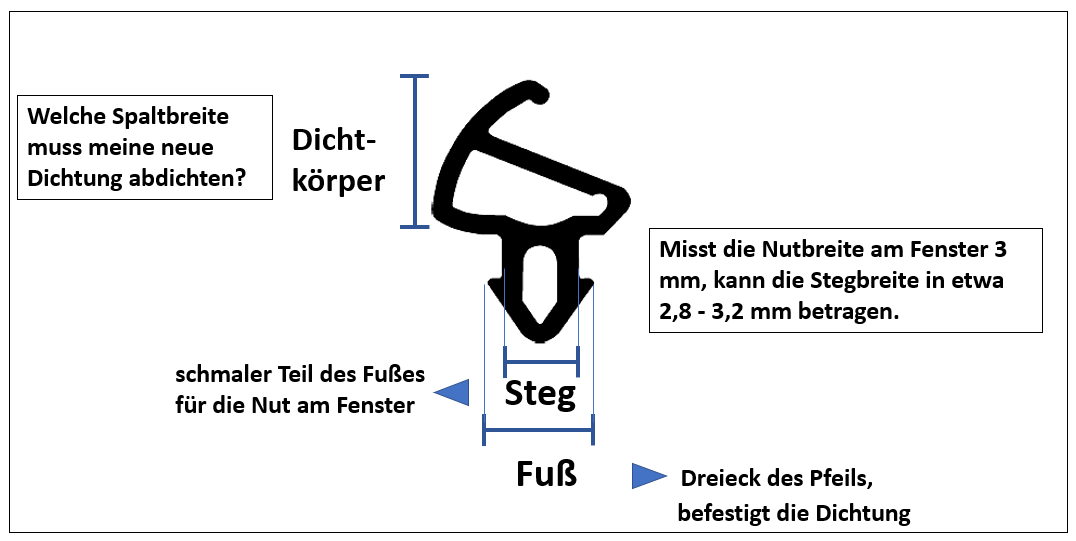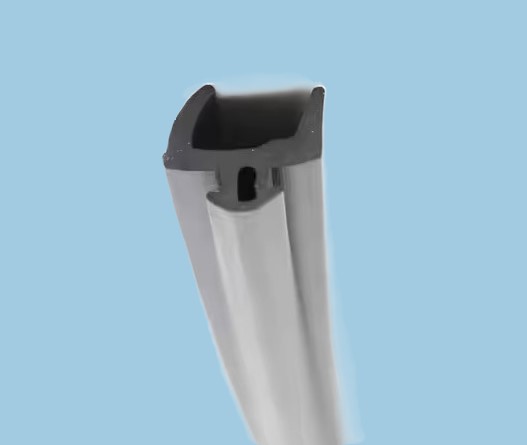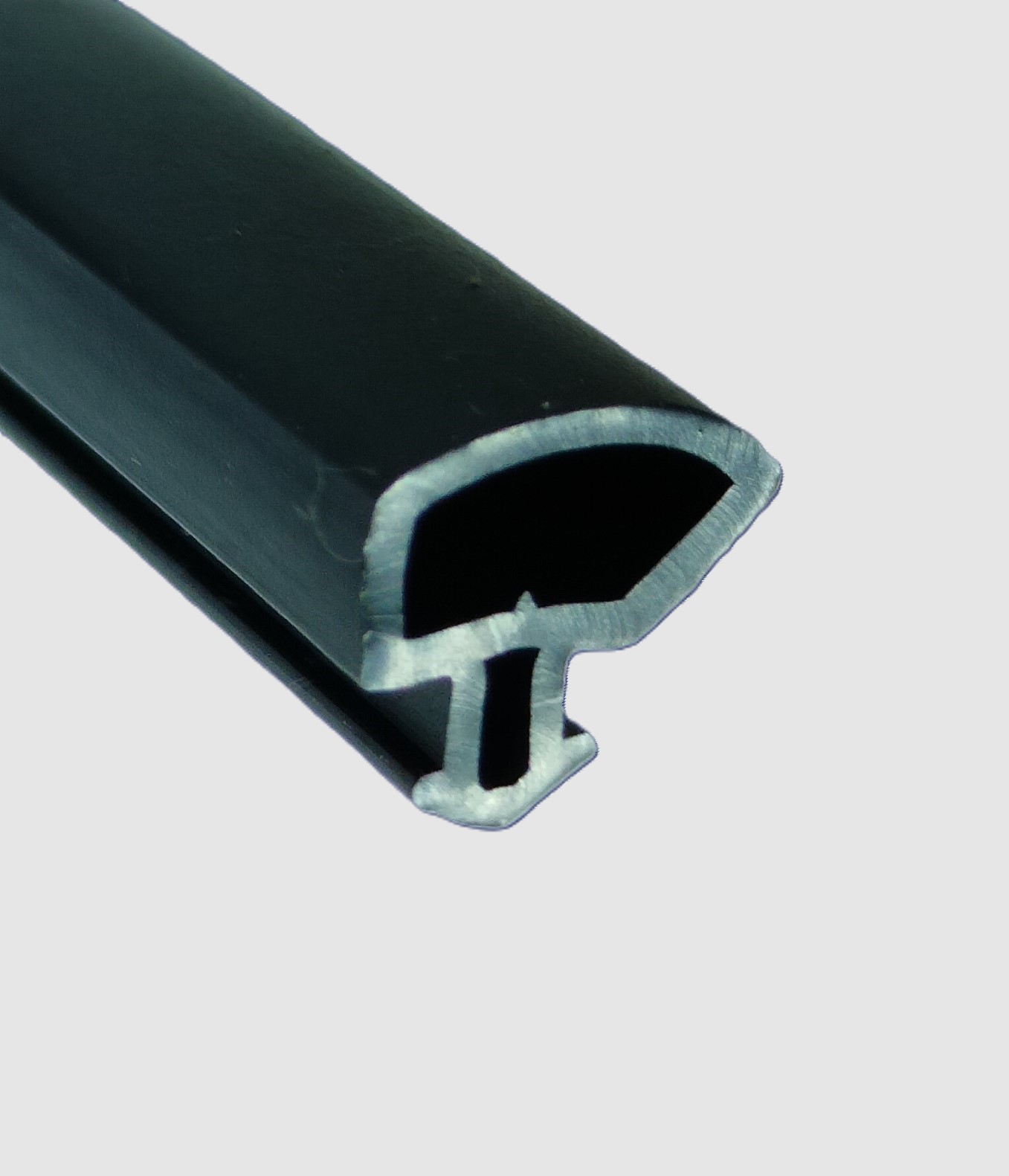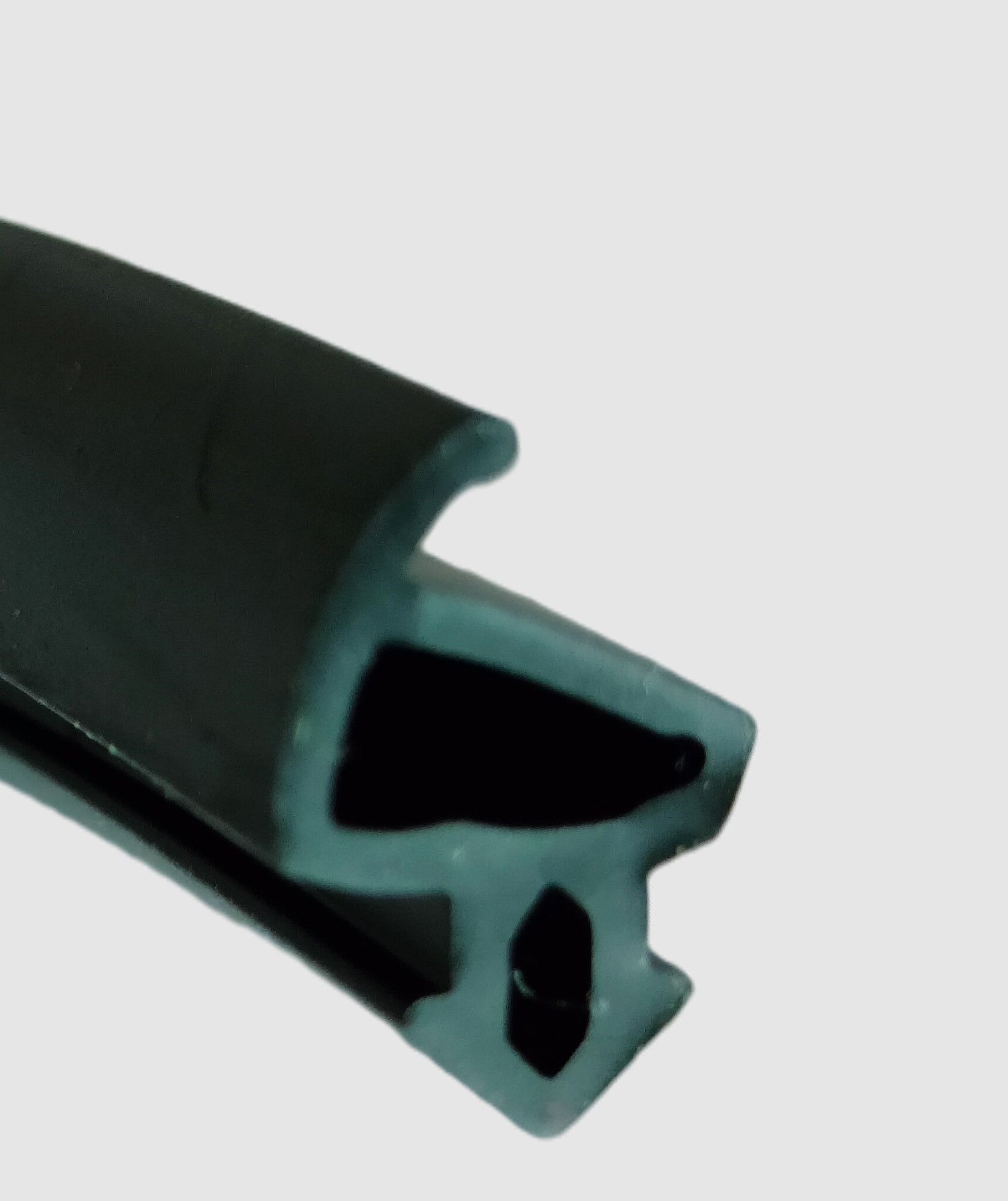1. buy window seals, but which seal fits my UPVC windows?
2 Why is the right seal important?
3. how do I determine the right window seal? How is a window seal constructed?
4 What types of seals are there for UPVC windows?
1. stop seal
2. center seal
3. glazing seal
5. are there different types of window seals?
1. hollow chamber seal
2. hollow chamber seal with lip
3. lip seal
6. what material are the window seals made of?
7. how do I measure the gasket I need for my UPVC windows?
8 Why are there so many different window seals for UPVC windows?
9. how can I correctly install the right seal for a UPVC windows?
10. are there special care instructions for seals on UPVC windows?
1. buy window gaskets, but which gasket fits my UPVC windows?
Windows can basically be differentiated according to the frame materials and the sealing system. Three materials dominate the market for window profiles: UPVC/PVC, wood and aluminum.
An important question with UPVC windows is: Which gasket fits my window? Different window types require different seals to provide effective protection against cold, draughts and moisture. The various window systems such as Veka, Rehau, Kömmerling, Schüco etc. work with different gasket geometries, which often vary only slightly in shape.
Gasket profiles are inserted into the groove of the window frame or sash to ensure optimum sealing. Choosing the right gasket requires experience, which we are happy to help you with. Depending on the material and condition of the window, we will find the right solution for you. Furthermore, regular maintenance and care of the seals are crucial in order to maintain their longevity and functionality and to save heating costs.
2 Why is the right seal important?
The right seal on UPVC windows is crucial for energy efficiency and thermal insulation. It prevents cold draughts from entering and therefore reduces heating costs. Damaged or incorrectly installed seals can significantly impair the functionality and longevity of windows, as gaps allow heat loss or mold growth. Regular inspection and maintenance are important to ensure intact seals. Defective seals should be replaced immediately, but after 15 to 20 years at the latest, their functionality will slowly deteriorate. It is therefore worth checking and maintaining the seals regularly to keep the windows fully functional.
3 How do I determine the right window seal? How is a window seal constructed?
The gasket base is the most important factor in determining the correct gasket for windows and doors. This is pressed into the gasket holder (groove width on the window in mm) of the window or door. The gasket base describes the lower part of the gasket and often has the shape of an arrow, which is connected to the gasket body by the web.
Whether window gaskets fit therefore depends heavily on the gasket base. A distinction is made here:
- The web width (narrow part of the gasket base) is the clamping area of the gasket. The exact groove width on the window must be measured for this. If the groove on the window is e.g. 3 mm, the web width on the new seal should be approx. 2.8 - 3.3 mm. A little smaller is not so tragic, then the seal goes more easily into the existing groove.
- The gasket base (the triangle of the arrow) should then be approx. 3.5 - 4 mm. The gasket foot secures the gasket in the groove of the window and at the same time prevents the gasket from easily coming out of the gasket groove.
The window seal should sit firmly in the groove, which means that it can only be pulled out of the holder with a little pressure.
The next step is to clarify which gap width the new seal must seal. To do this, we take a look at the seal body. It is crucial to determine the right size to ensure an effective seal. When the window is closed, the gasket should fit snugly against the frame and sash without a gap.
The installation height of window gaskets varies and there are different requirements for them. With older windows, the fittings can often no longer be adjusted and the original seals no longer seal the gap air properly.
Our special seals made of high-quality silicone are suitable for gap compensation of up to 9 mm. If the old window seals are only slightly worn, standard seals can be used. In such cases, we recommend our TPE gaskets.
It is important to ensure that the closing pressure on the window is not too heavy, as this may indicate that the gasket is too thick. It is normal for the window seal to press lightly against the window frame. Simply try out which seal fits best Different window systems and seals can be combined with each other. Please contact us and we will be happy to provide you with expert advice.
4. what types of gaskets are available for UPVC windows?
When it comes to sealing systems, we differentiate between the concepts of the rebate seal and the center seal:
4.1. stop seal (stop seal system)
In the rebate gasket system, the gaskets are installed in a prefabricated groove in the frame, i.e. in the fixed part of the structure, and in the sash, the moving part of the window or door. When the element is closed, the gaskets of the sash are pressed against the frame.
The rebate gasket plays an important role in protecting against draughts, pollen, moisture and noise. Pressing the sealing elements together when the window or door is closed creates an effective seal that prevents the ingress of unwanted influences from outside. This not only improves comfort in the room, but also increases the energy efficiency of the building.
The rebate seal system is commonly used for older window systems.
Features:
- The seals are located in the frame and in the sash.
- When the window or door is closed, the sash presses against the frame, the seals are pressed together and the window or door is thus sealed.
- The structure of the rebate seal ensures that a continuous sealing line is created, preventing the ingress of air, water and sound.
Advantages:
- Effective sealing against unpleasant weather influences: Draughts, moisture and pollen are kept out
- Simple installation and maintenance
- cost-effective
4.2 Center seal (center seal system)
With the center seal system, the seals are placed in the center of the frame and in the sash of the window or door profile construction. In this case, the seal for the outer window level in the frame is not required. There is always a seal in the sash if it is a center seal system.
Features:
- The center seal is located on the inside of the frame, usually in its own chamber in the profile.
- When the window or door is closed, the center seal provides an additional barrier against the ingress of air and water.
Advantages:
- Effective sealing against wind, rain and sound
- Increased energy efficiency due to additional barrier
- Good air circulation
Conclusion: rebate sealing systems are widely used and offer solid performance with a simple and cost-effective design. They are suitable for older windows and can be found in many standard windows and doors. Center seal systems offer improved performance in terms of energy efficiency and sound insulation and are often used in buildings with high energy efficiency requirements. In practice, the choice between the systems depends on the building requirements, climatic conditions and budget. Both systems can be modified and combined to achieve optimal results.
4.3 Glazing seal
Glazing gaskets for UPVC windows are special seals that sit between the glass and the frame of the window. These seals contribute significantly to the overall performance and durability of the window. They not only provide an effective seal against wind and weather, but also improve sound and heat insulation. This reduces energy consumption and creates a pleasant indoor climate. The glazing seals also protect the window from moisture and damage caused by condensation. It is important to ensure high-quality workmanship and material quality to guarantee the service life of the windows and contribute to maintaining the value of the property.
5. are there different types of window seals?
Yes, there are different types of seals for UPVC windows that can be used for both the rebate system and the center seal system. It is important to know that the shapes can vary depending on the window manufacturer.
 | Hollow chamber gaskets are sealing profiles with one or more hollow chambers. Thanks to its flexible and elastic shape, the rubber seal adapts to different surfaces and seals effectively. When the window is closed, the air in this type of seal is compressed. As a result, the window sash closes more gently . Hollow chamber seals have a high restoring force, which means that they return to their original shape after opening. They are the second generation of gaskets. |
 | Hollow chamber gaskets with lip are sealing profiles with a hollow chamber and additional lip structure. The combination of the flexibility of the hollow chamber and the additional protective function of the lip creates an effective solution for various applications. |
 | Lip seals consist of one or more flexible lips that are pressed against the frame when the window or door is closed. These seals are effective against air, water and pollen ingress due to their flexible design and offer a high degree of adaptability. Lip seals have special geometric shapes and are first generation seals, depending on the window system. |
6. what material are the window seals made of?
Window seals are made of a variety of materials, each with specific properties in terms of flexibility, durability, weather resistance and thermal insulation. The most common materials for window gaskets are listed below:
TPE gaskets
TPE gaskets are an important component of UPVC windows when it comes to insulation and energy efficiency. These seals ensure that the window is sealed airtight, preventing heat from escaping. The rubber seals are available in various colors such as grey or black. Thanks to their flexibility and durability, TPE rubber seals make a significant contribution to the energy efficiency of UPVC windows.
Silicone seals
Our special silicone seal profile is characterized by its high weather resistance, UV resistance and adaptability. It can bridge a larger gap and is suitable for different types of gaskets, making it versatile in use. See for yourself: Special silicone gasket.
Silicone gaskets in general play a crucial role in UPVC windows, as they provide an effective seal. They prevent the ingress of moisture, dirt and noise and thus contribute to energy efficiency and sound insulation. Thanks to their weather resistance and durability, they remain effective for years.
Here you can find more information: Properties and materials of window seals.
7 How do I measure the gasket I need for my UPVC windows?
The right seal for UPVC windows plays a decisive role in the energy efficiency and durability of the window. To measure the right length of seal for a UPVC window, the following steps are helpful:
1. Determine the window type: Which manufacturer is it? This information can be found on the frame or on a label on the window. Are the same seals installed in the frame and sash? Depending on the window manufacturer, different sealing profiles may be installed.
2. Remove the old seal: Look for a start or end point or cut the seal (do not cut it, just separate it). Measure the width, height and shape with a caliper or ruler. Alternatively, simply send us a cross-section of the seal and we will determine it. It definitely makes sense to request a free sample from us before ordering a larger quantity.
3. Measure the required total length: Take a tape measure and measure the length of the seal along the entire frame or sash of the window. Make a note of the measurement to find the right overall length for the replacement seal.
4. Choose the right type of seal and material: Depending on your requirements, you can choose between TPE or silicone. Make sure that the material is weather-resistant and durable so that the seal remains functional for a long time.
5. Order a replacement seal
When choosing the right profile, we recommend that you look for high-quality materials such as TPE or silicone, which offer a long service life and good sealing properties. You should also make sure that the gasket is suitable for UPVC windows. If you are unsure, please contact us for advice to ensure that the new gasket fits and works perfectly.
8 Why are there so many different window seals for UPVC windows?
The market share of UPVC windows and doors is around 70% in Germany. These have been manufactured since the 1960s by around 15 different system suppliers such as Schüco, Rehau, Veka, Kömmerling, Weru and others. These suppliers sell their prefabricated raw profiles to fabricators such as joineries or window manufacturers, who use them to produce individual windows for their customers. The problem is that each manufacturer uses its own system and therefore different profiles, each of which requires specific seals. Due to years of continuous development of window systems, the variety of window and door gaskets required is constantly increasing. In addition, different gaskets are used for each window, which makes the search for suitable gaskets even more difficult.
9. how can you correctly install the right seal for a UPVC windows?
In order to install the window seals correctly, the correct seals must first be selected. It is important to consider the right material, the right profile shape and the dimensions. The tools should then be prepared and the old seals carefully removed. It is important to remove all of the old rubber seal. The groove into which the new seal will be inserted must then be thoroughly cleaned. When inserting the new seal, care should be taken to ensure that it is not stretched during installation. There are different ways of inserting the seals: Fold over, mitre cut or use a V-cut to remove the base. You can find more information here: Expert advice: How to replace and seal your UPVC windows yourself. To insert the seal, the sealing foot can be pulled through a clean cloth with detergent and water. This allows the sealing profile to slide more smoothly into the groove . After installation, the window should be checked and adjusted if necessary. Regular inspections and cleaning help to extend the service life of the window seals and maintain their function. Instructions for self-installation with videos can be found here.
10. are there special care instructions for seals on UPVC windows?
Yes, there are special care instructions for seals on UPVC windows. These include regular cleaning with a soft cloth or sponge, the use of mild cleaning agents and avoiding aggressive abrasive cleaners. For care and preservation, the seals should be treated with a silicone care product every six months. It is also important to regularly check for cracks or damage and to replace damaged seals immediately. Care should be taken when opening and closing windows, they should be aired regularly and the seals should be protected from extreme conditions such as sunlight or frost. It is also advisable to move the windows regularly and avoid overloading them in order to extend the service life of the seals.
